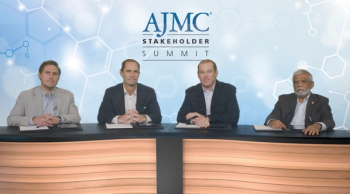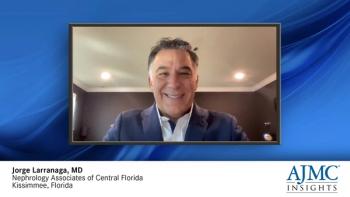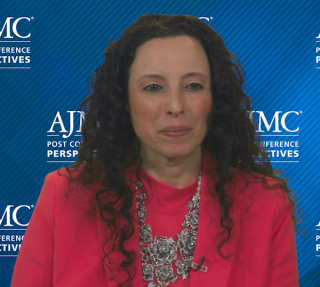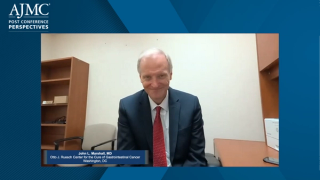
Clinical
Latest News
Latest Videos

CME Content
More News

Updated Kidney Disease: Improving Global Outcomes guidelines and a consensus report with the American Diabetes Association support the use of finerenone in certain patients who have chronic kidney disease (CKD) that may be linked to type 2 diabetes (T2D).

Immune checkpoint inhibitors can play a key role in the treatment of upper-GI and esophageal cancer.

Key opinion leaders navigate unmet needs across the treatment landscape of gastroesophageal cancer.

Managed care experts discuss health disparities among various patient populations affected by MDD.

Drs Cannon and Rothrock provide insights into their process for defining value among newly launched MDD treatments.

Investigators still do not fully understand how cannabidiol (CBD) works in patients with seizures, according to a new review.

In an interview at this year’s American Heart Association Scientific Sessions meeting in Chicago, Tochi M. Okwuosa, DO, cardiologist and director of cardio-oncology at Rush University Medical Center, discussed the importance of addressing cardiovascular disease (CVD) prevention in patients with cancer who are undergoing treatment.

A prospective study found that patients and providers saw benefits while using a virtual assistant integrated into a teledermatology program.

The investigators of this new study wanted to more clearly define the patient characteristics of the 2 main types of chronic rhinosinusitis: with nasal polyps (CRSwNP) and without nasal polyps (CRSsNP).

The study probed the role of body weight on gut permeability and systemic inflammation and the impact on asthma control and asthma status.

High levels of interleukin (IL)-26 levels correlate with an exaggerated inflammatory response that signifies severe cases of the disease, according to researchers.

The authors of the retrospective, observational study said it was the first to use electronic medical records to make direct comparisons of these 4 biologics for asthma.

A research letter published in Blood Advances details the first clinical evidence of sustained hematologic remission for cold agglutinin disease (CAD) after sutimlimab treatment discontinuation.

The biologic is the first drug that aims to delay the diagnosis of type 1 diabetes.

As providers strive to deliver seamless, collaborative, and deeply engaging care, advances focused on treating the whole health of a person, wherever they are in their care journey, will be necessary as the health care system continues to evolve to meet the needs of patients and providers alike.

New data show patients treated with chimeric antigen receptor (CAR) T-cell therapy as salvage therapy tended to have meaningful results despite treatment failure following B-cell maturation antigen (BCMA) CAR T.

Experts from US Oncology, Tennessee Oncology, AON, and COA dig into the details of implementing the Enhancing Oncology Model, set to take effect July 1, 2023.

Medical experts illustrate characteristics in the presentation of lupus nephritis.

Alvin Wells, MD, PhD, opens a discussion surrounding systemic lupus erythematosus (SLE) and lupus nephritis (LN).

The 10-year follow-up in the DIACAM 1 study demonstrated a notable increase in prevalence of different types of autoimmune diseases among patients with type 1 diabetes (T1D).

Despite Improvements in Lung Cancer Screening, Increased Efforts Still Needed to Address Disparities
The State of Lung Cancer 2022 report issued by the American Lung Association illustrates aspects of diagnosis and care that require additional attention to address disparities and increase nationwide screening and treatment engagement while reducing risk factor exposure.

A new study has found that a low dose of antidepressants and issues with adherence may contribute to ongoing anxiety or depression among patients with epilepsy on drug therapy.

Switching from the originator products to biosimilars or between biosimilars is safe and effective, according to a review of real-world studies.

A systematic review and meta-analysis presented at ACR Convergence 2022 provide insight into the effects of belimumab in patient populations with cutaneous lupus erythematosus, with or without systemic lupus erythematosus (SLE).

Authors also found that the mortality rate of people with cutaneous lupus erythematosus (CLE) are generally similar to that of the general population.














































